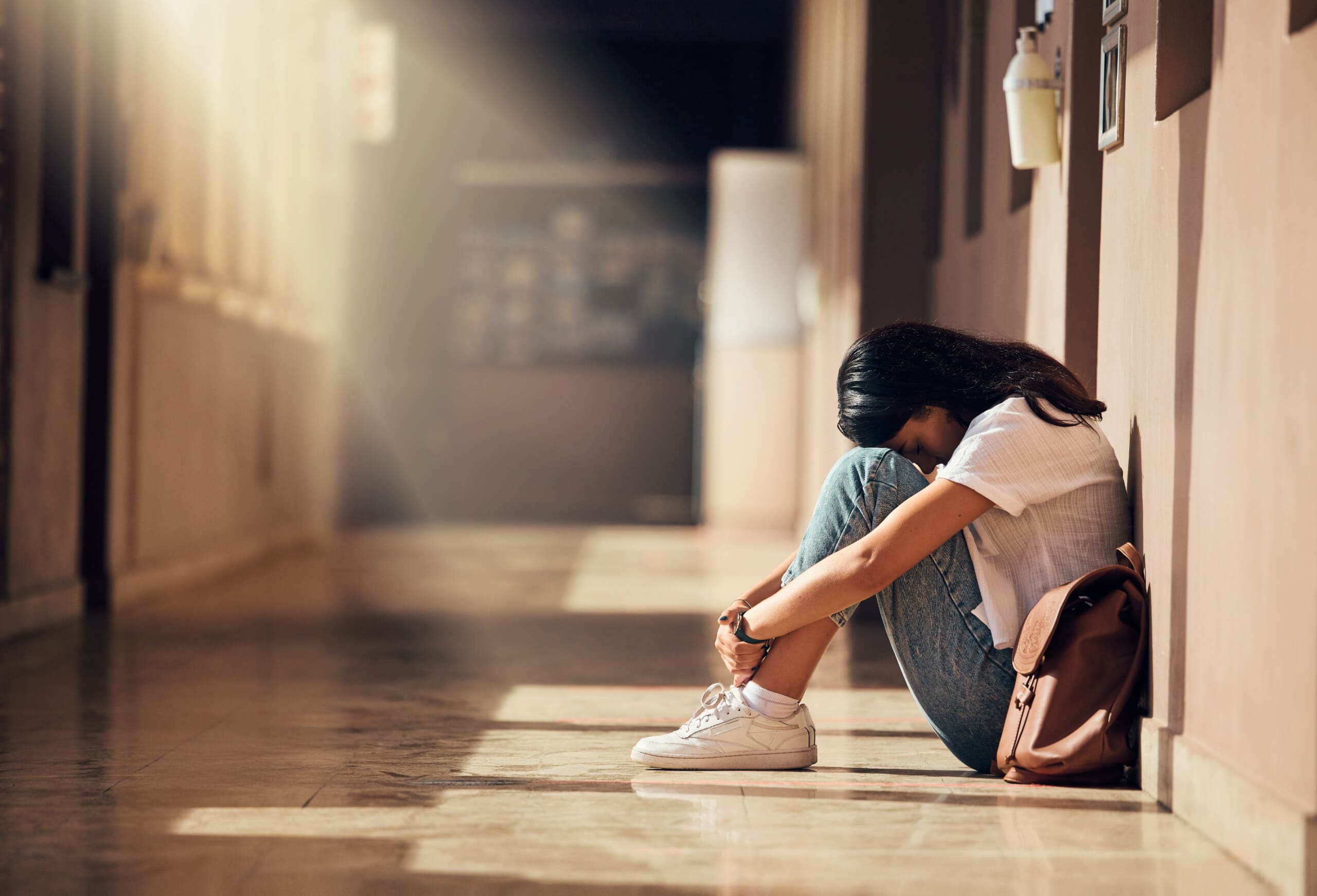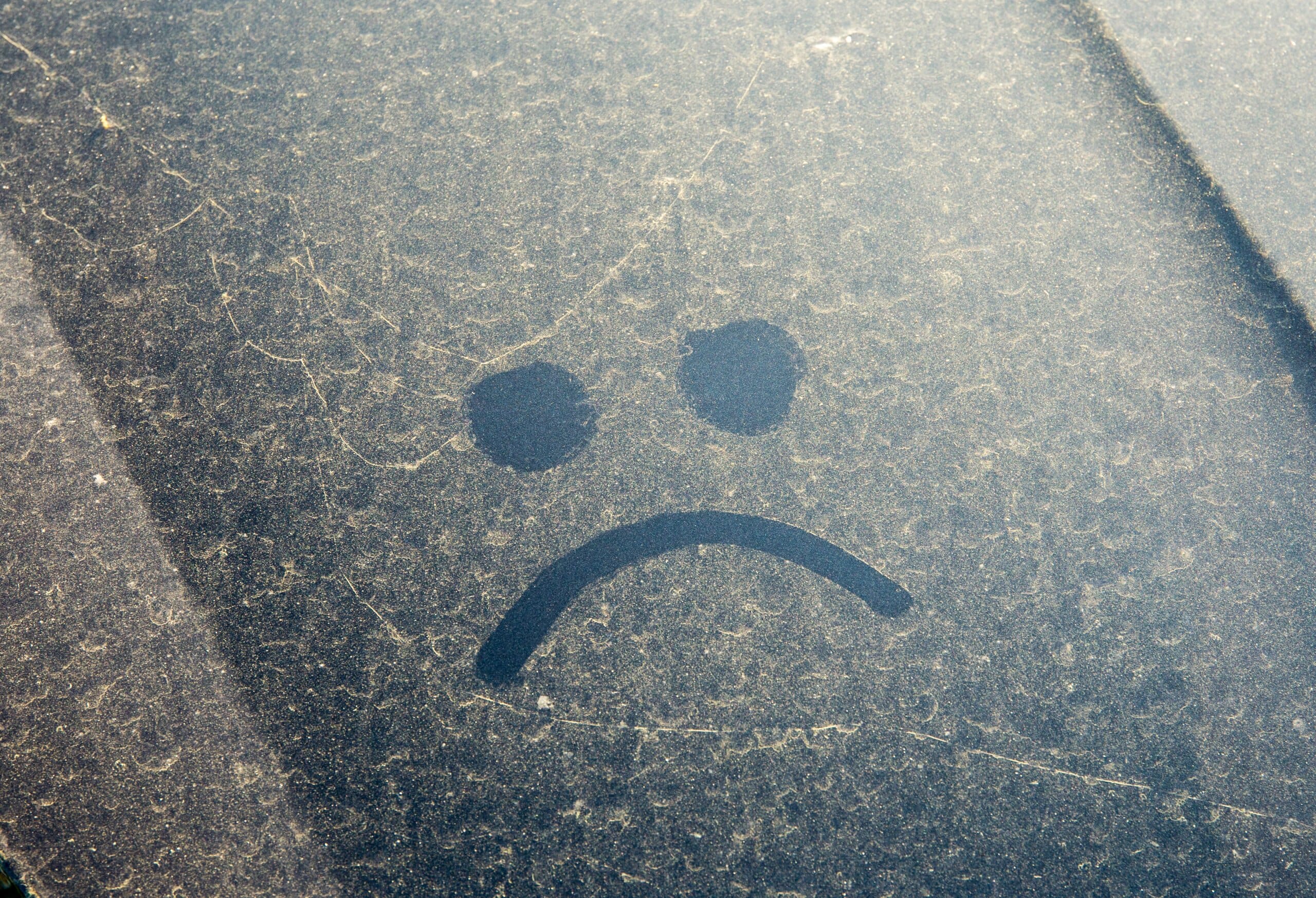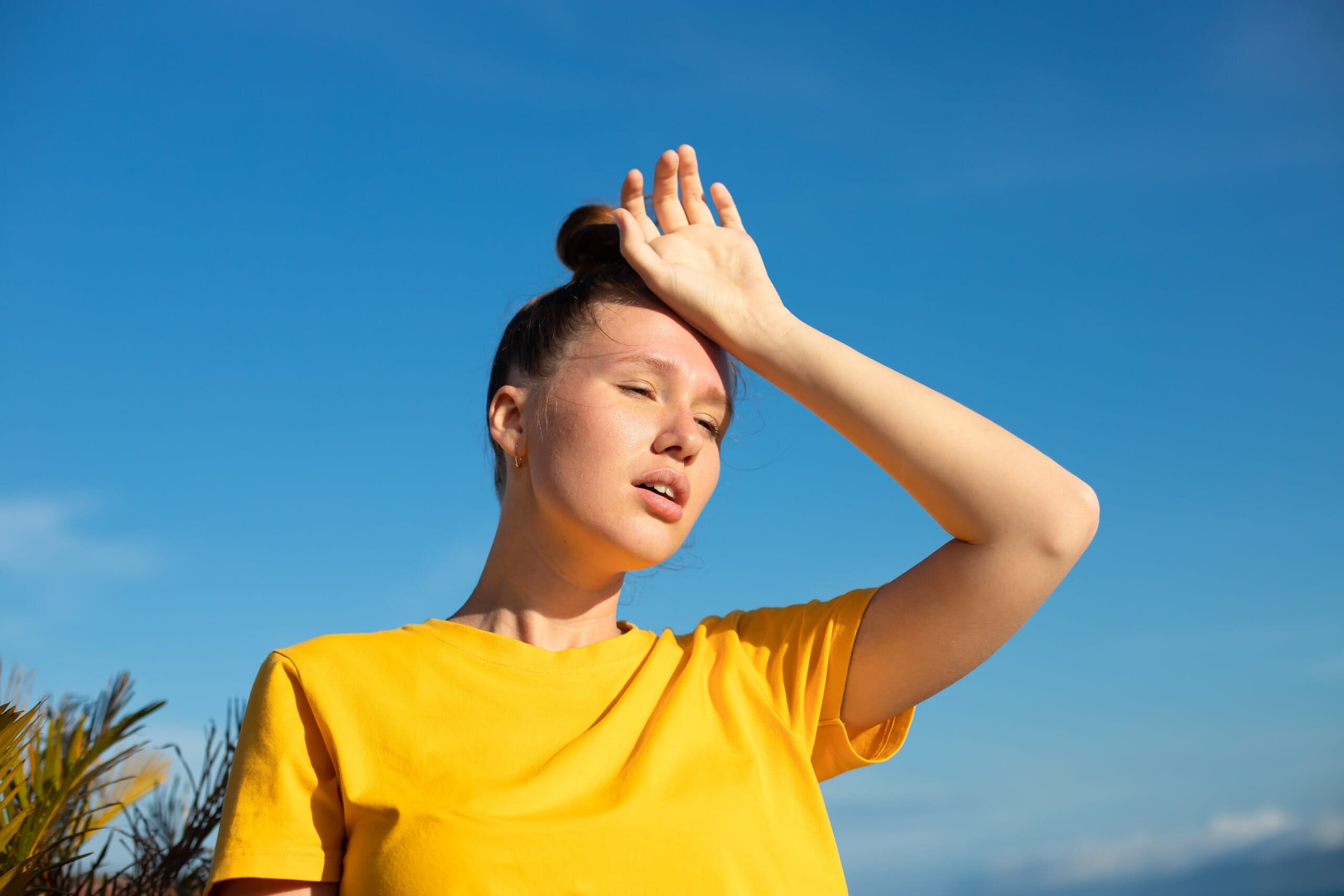We’ve all heard of suffering from S.A.D in the winter, but did you know that Seasonal Affective Disorder (S.A.D.) can occur in the summer months too? With global warming causing extreme weather events and warmer-than-average temperatures, it can cause feelings of discomfort, stress, and anxiety to intensify over the warmer months – which is why the term ‘summer S.A.D.’ has been coined.
So, in the words of Lana Del Rey, if you’ve got that summertime, summertime sadness, read on to discover if it’s due to the city or state that you live in.

The US states most likely to suffer from summer S.A.D.
By looking at factors such as temperature, humidity, rainfall, and pollen levels, we’ve identified the top states suffering from S.A.D. in the summer.
1. Florida
With the most rainfall between May and September, at a huge 7.13 inches, Florida is officially the state that’s the most likely to suffer from S.A.D. Average temperatures sit at 81 degrees Fahrenheit in the summer (the third highest on our list), which, whilst nice and toasty, can intensify those feelings of anxiety and stress.
Not only that, but Florida also sees the joint third most humidity levels in the afternoon, tying with Maine at 63, which again, can intensify feelings of discomfort.
2. Louisiana
The state of Louisiana is the second state most likely to suffer from summer S.A.D., with its southern swamp regions a hotbed for heat and humidity,
Average temperatures are the joint highest with Texas, at 81.1 degrees Fahrenheit, and it also sees the third most rainfall, at an average of 4.94 inches over the summer months. Louisiana also gets its fair share of humidity: it’s the seventh most humid state in the morning, and the second most in the afternoon.
3. North Carolina
With its moderate winters and super-hot summers, citizens in North Carolina are the third most likely to develop summer S.A.D. Humidity and rainfall go hand-in-hand; and in North Carolina’s case, it’s the joint seventh most humid state in the morning, with a score of 90; and also sees the fourth most rainfall, at an average of 4.8 inches between May and September.
4. New Jersey
New Jersey makes it into fourth place for summer S.A.D. Hay fever sufferers will want to stay indoors here, with the state having the sixth highest pollen levels, at 828 on average over summer.
Not only that, but New Jersey sees a lot of humidity in the afternoon, scoring joint seventh with Massachusetts, at 59%.
5. Virginia
Rounding off our top five states most likely to suffer from summer S.A.D. is Virginia; with the joint third highest humidity in the morning, alongside Georgia and South Carolina, at a huge 91%.
Pollen levels are high here too, with its score of 843 the fourth highest out of all 50 states.
South Carolina, West Virginia, Georgia, Mississippi, and Maine make up our top 10 states most likely to suffer from summer S.A.D.
Mississippi is the most humid in the morning (93%), and has the fifth highest temperatures (79.5 degrees Fahrenheit); whereas South Carolina has the second most rainfall (5.02 inches).
When it comes to pollen levels, none of our top 10 scored highly. In fact, it’s Maryland (927), Delaware (907), and Kansas (849) that are the worst for hay fever sufferers; and they came 16th, 13th, and 34th overall.
At the other end of the spectrum, people living in Colorado are the least likely to suffer from summer S.A.D., followed by Arizona, Utah, Idaho, and New Mexico.

The US cities most likely to suffer from summer S.A.D.
To find the cities where people are most likely to suffer from S.A.D., we looked at a few different factors, including average precipitation, lowest temperatures, and the number of sunny days.
1. Goodland, Kansas
Despite Kansas ranking 34th overall as a state, it’s the city of Goodland where people are most likely to suffer from summer S.A.D.
The biggest reason for this is that the state of Kansas has the fourth highest pollen levels, at a count of 849. However, the number of partly sunny days are on the higher end too, at 117 a year.
2. Miami, Florida
Miami’s heat puts it into second place, with the most number of partly sunny days (175), and the seventh highest low temperatures (78.2 degrees Fahrenheit) – both of which can contribute to symptoms of summer SAD.
When it comes to rain, Miami has the third highest precipitation on average, at 38.33 inches.
3. Fort Myers, Florida
A 2.5-hour drive west of Miami, Fort Myers sits on the opposite coast of Florida, and is the third city that’s most likely to suffer from SAD. It has the second most partly sunny days, at around 168 out of 365, and its average temperatures are at the higher end, at 84.8 degrees Celsius over the summer.
4. Baltimore, Maryland
Baltimore’s population are the fourth most likely to develop summer S.A.D., with Maryland having the highest pollen levels of all states, at an average count of 927. Not only that, but precipitation is on the higher end in Baltimore, at 21.16 inches.
5. Salisbury, Maryland
With a population of 33,200, Maryland’s Salisbury makes up our top five, again – like Baltimore – due to the fact that Maryland has the highest pollen levels in the US.
Aside from that, Salisbury sits on the higher end of the scale for average precipitation, at 16.66 inches, and it has 108 partly sunny days on average over the year.
Rounding off our top 10 cities most likely to suffer from summer S.A.D. is West Palm Beach in Florida, Dodge City in Kansas, Wilmington in Delaware, New York City in New York, and Key West in Florida.
Wilmington scores poorly for pollen levels, with Delaware having the second highest pollen count, at 907; and West Palm Beach has the second highest average precipitation, at 42.76, behind Mount Washington, which scored 151st overall.
Cities with the highest average temperatures are Death Valley (98.1 degrees Fahrenheit), Phoenix (93.8), and Yuma (91.2); and the cities that have the most number of sunny days are Yuma, Phoenix, and Las Vegas, at 242, 211, and 210 days respectively.

Top tips for creating a good sleeping environment
So many factors can disrupt your sleep – from the warmer weather, through to feelings of stress and anxiety. Luckily, our Founder and CEO, Martin Seeley, has these tips on creating an optimum sleeping environment – and you can also have a read of our ultimate bedtime routine, to help you get seven hours of shut-eye every single night.
1. Keep your room cool
If you’ve ever tried to sleep in the heat, you’ll know it’s extremely hard to do so. 65 degrees Fahrenheit (18.3 degrees Celsius) is the optimum temperature, so you might want to use air-con, a fan, or a cooling mattress to help you reach that temperature – just make sure you don’t run your fan all night.
2. Limit your screen exposure
The blue light from your phones, laptops, and tablets can stimulate your mind, and trick your body into thinking its daytime. Set yourself a rule where you don’t expose yourself to blue light an hour before bed; switching your scrolling to reading a book, or practicing meditation.
3. Use light-blocking techniques
The long, light days are one of the best things about summer, but it can really mess with your sleep cycle – especially if you like to go to bed early. Investing in blackout blinds will help to keep your room dark when it’s time to go to bed, promoting your body’s production of melatonin – the sleep hormone we need to feel sleepy.
4. Invest in comfy bedding
Your mattress, duvet, and pillows all play a key part in helping you get a restful night’s sleep. There are so many bedding options available depending on your preferred sleeping position, as well as options if you have niggling aches and pains, asthma, or snore. If you’re a light sleeper, you might also want to consider getting earplugs and a white noise machine, to keep outside disruptions to a minimum.
5. Choose breathable bedding
With temperatures higher in the summer, your winter duvet will just make you even warmer. Switch out your bedding for breathable options in cotton and linen, as they promote better air circulation, and absorb sweat, keeping you cooler in the night.
So, whether or not you suffer from summer S.A.D., or just find it difficult to get to sleep at night, hopefully our tips will help you to relax and unwind at bedtime, not just in the summertime, but over the winter months too.
Methodology
For state data:
This dataset ranks all US states, based on how likely they are to suffer from S.A.D. To do this, 5 different factors were used. Once the data for the factors was collected, the factors were then normalised, to provide each factor with a score of between 0 and 100.
If data was not available, a score of 0 was given. The normalised values were then summed, to give each location a total score out of 5. The locations were then ranked from highest to lowest, based on their total scores.
The factors used are as follows:
- Average temperature - The average temperature between the months of May to September in each state in Fahrenheit.
- Humidity in the morning - The humidity percentage recorded in the morning.
- Humidity in the afternoon - The humidity percentage recorded in the afternoon.
- Average rainfall in inches - The average rainfall in inches between the months of May to September in each state.
- Pollen levels - The average pollen count between the months of May to September in each state.
The factors were indexed as follows:
- Average temperature - High values get a high score. Low values get a low score.
- Humidity in the morning - High values get a high score. Low values get a low score.
- Humidity in the afternoon - High values get a high score. Low values get a low score.
- Average rainfall in inches - High values get a high score. Low values get a low score.
- Pollen levels - High values get a high score. Low values get a low score.
All data is correct as of 05/05/24. The ranking data shown is a compilation of multiple data sources and may not be representative of real life.
For city data:
This dataset ranks all US cities, based on how likely they are to suffer from S.A.D. To do this, 6 different factors were used. Once the data for the factors was collected, the factors were then normalised, to provide each factor with a score of between 0 and 100.
If data was not available, a score of 0 was given. The normalised values were then summed, to give each location a total score out of 6. The locations were then ranked from highest to lowest, based on their total scores.
The factors used are as follows:
- Average temperature - The average temperature between the months of June to September in each city in Fahrenheit.
- Average rainfall in inches - The average rainfall in inches between the months of June to September in each city.
- Lowest temperature - The average lowest temperature recorded between the months of June to September in each city in Fahrenheit.
- Sunny days - The total number of sunny days per year in each city.
- Partly sunny days - The total number of partly sunny days per year in each city.
- Pollen levels - The average pollen count relative to the state.
The factors were indexed as follows:
- Average temperature - High values get a high score. Low values get a low score.
- Average rainfall in inches - High values get a high score. Low values get a low score.
- Sunny days - High values get a high score. Low values get a low score.
- Partly sunny days - High values get a high score. Low values get a low score.
- Pollen levels - The average pollen count relative to the state.
All data is correct as of 05/05/24. The ranking data shown is a compilation of multiple data sources and may not be representative of real life.







